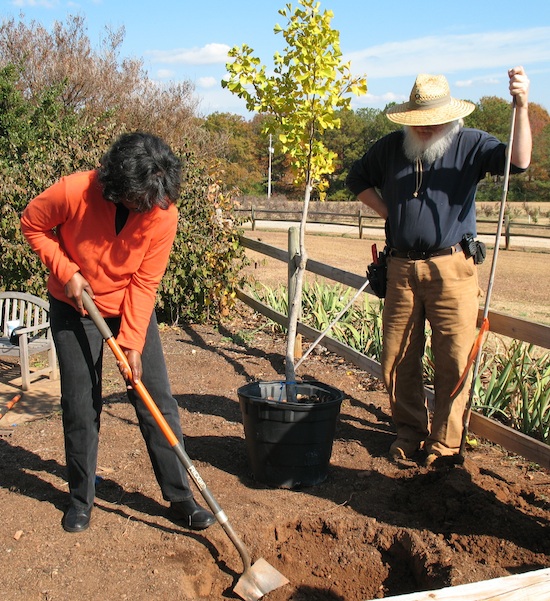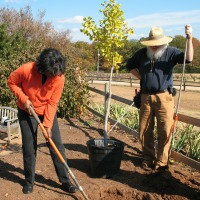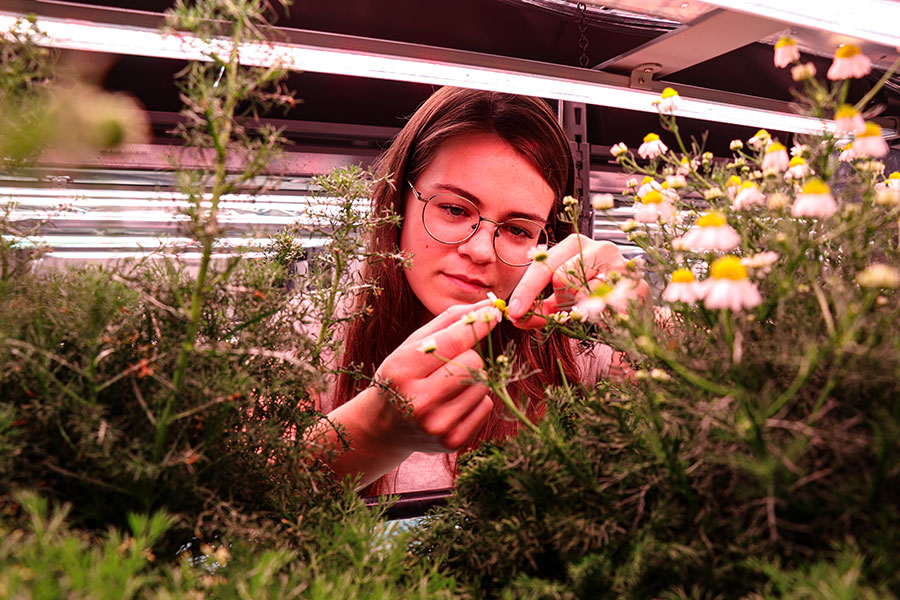Although most planting and transplanting occurs in the spring, fall is the best time of year to plant or transplant trees and shrubs.
“Trees planted in the fall have an opportunity to establish an extensive root system while the plant is dormant,” said Frank Watson, the University of Georgia Cooperative Extension coordinator in Wilkes County. “The soil temperature in most parts of the state is warm enough to support root growth during most or all of the winter season.”
First make sure the trees or shrubs are healthy enough to plant in a new environment. If you’re buying new trees or shrubs from a nursery, make sure the trunk is not damaged, said Matthew Chappell, a UGA Extension nursery production specialist.
“If you see any damage to the bark, do not purchase (that tree),” Chappell said. The same goes for trees that are already on your property. You don’t want to stress an already damaged tree by transplanting.
Chappell added that picking trees with straight trunks and symmetrical canopies will save you a lot of heartache in the future. They’ll be easier to prune into a desired shape and typically are more structurally sound.
Also avoid purchasing pot-bound trees. Check the container for circling roots which indicate that the tree or shrub will have a poor root system after it’s been planted.
If you’re working with a tree that’s already on your property, help the plant take a break from producing new branches and leaves before transplanting. The plant can then put most of its energy into adapting to its new environment, not into producing new growth above the soil.
Avoid applying high nitrogen fertilizers to plants for about two months prior to moving. Another way to reduce new growth is to restrict the amount of water applied. However, severe water stress prior to transplanting can weaken the plant and decrease the survival rate, Watson said.
In addition to having their growth restricted, transplanted shrubs and trees need to have their roots pruned. Pruning a tree’s roots — trimming them back until they fit inside the soil ball — maximizes the quantity of feeder roots that are moved with the plant. Ideally, plants targeted for fall transplanting would have their roots pruned the spring before they’re replanted, but they can still be pruned 30 to 60 days before transplanting in the fall.
Whether you’re working with a newly purchased plant or one on your property, it’s important to pay extra attention to preparing the plant’s new home. Properly preparing the planting site will affect root growth, which determines the plant’s chances of survival and subsequent growth.
The planting hole should be two to three times the diameter of the soil ball. Place the plant at the same soil depth it was grown at. If planting several small plants close together, it may be more efficient and better for the plant to prepare an entire bed.
When physically planting your shrub or tree, try not to disturb the soil ball of the plant. This will ensure maximum contact between the roots and the soil, which will speed the plant’s creation of its new root system.
A broken or loosened soil ball may prevent the plant from absorbing all of the water it needs. Wetting the soil around the shrub or tree can keep the soil ball together as you transplant. You may want to use wire baskets or other equipment that is available for moving plants.
Don’t plant trees and shrubs so that water pools on the surface of the planting hole. But remember, the plant will need extra water for the first two years.
Wait several months, maybe until the following spring, to fertilize the newly transplanted tree. This allows the root system to establish itself before spurring new growth above ground.








